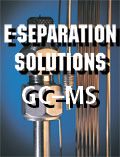Ask LCGC: Temperature Fluctuation Problem, or . . .?
The answer to the following question was provided by LCGC's "LC Troubleshooting" columnist John Dolan.
The answer to the following question was provided by LCGC’s “LC Troubleshooting” columnist John Dolan.
Q: We are using an LC–MS system for bioequivalence measurements. We prepared a batch of 120 samples and ran those. The first few injections showed good results, with an excellent calibration curve. After a few injections, the internal standard (IS) area ratio was continuously increasing up to the end of the batch, and total obscure results were obtained. I observed that the ambient temperature of the room was constantly fluctuating +/- 2 °C. My senior coworkers advised me to keep the room temperature constant. I had the same problem with three batches. My question is threefold: Could ambient temperature changes be affecting the results (drug concentration)? What caused the IS variation? Is there a formula for relating temperature with concentration?
A: It is unlikely that temperature is the problem. Temperature will affect retention (rule of thumb is 2% change in retention for 1 °C temperature change). I would make a plot of IS and analyte areas and IS/analyte ratio all on the same plot (three lines) vs. injection number or time. You may have to multiply the ratio by something to get it to sit on the same scale as the areas. Look for patterns between the various responses. Does the IS area change or the analyte, or both? The first thing I would look for is ion suppression. I’ve seen it change the area of one of the components, but not the other, which will affect the ratio.
Questions?
LCGC answers your technical questions. Each month, one question will be selected to appear in this space, so we welcome your submissions. Please send all questions to the attention of "Ask LCGC" at lcgcedit@lcgcmag.com We look forward to hearing from you.

Common Challenges in Nitrosamine Analysis: An LCGC International Peer Exchange
April 15th 2025A recent roundtable discussion featuring Aloka Srinivasan of Raaha, Mayank Bhanti of the United States Pharmacopeia (USP), and Amber Burch of Purisys discussed the challenges surrounding nitrosamine analysis in pharmaceuticals.
Extracting Estrogenic Hormones Using Rotating Disk and Modified Clays
April 14th 2025University of Caldas and University of Chile researchers extracted estrogenic hormones from wastewater samples using rotating disk sorption extraction. After extraction, the concentrated analytes were measured using liquid chromatography coupled with photodiode array detection (HPLC-PDA).






